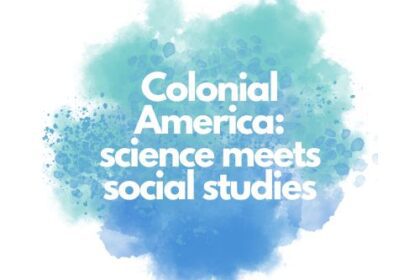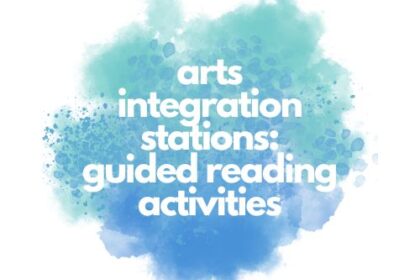Departmentalized teachers, this one’s for you! I know your time is precious. And I know that often, you teach both reading and social studies in a time block that’s…lacking. What if I told you that to cover both, you need only become fabulous at teaching reading through social studies?!
The year I taught 5th-grade social studies was one of my favorite years. It’s when I dove head-first into brain-based instructional strategies and arts integration. I didn’t teach English Language Arts and Reading as well as social studies, but I did help my team teacher who was responsible for their ELAR scores as much as possible.
But the year I taught self-contained 3rd grade is the year I realized something was wrong with how we taught social studies. I learned that unless you used social studies to teach your reading, many of my colleagues just weren’t teaching social studies. This is still true, a decade later, based on my conversations with teachers.
There are five ELAR concepts that can be taught using social studies: informational text, biography, text features, historical fiction, and research skills.
Informational Text
Non-fiction articles like those found in student newspapers and magazines (like Time for Kids or Scholastic News) are great examples of informational text. They deliver solid core content. Select a specific periodical that addresses your social studies standards. I love this because it exposes students to the grade-level-appropriate information they need plus an important genre.
Biographies
Biographies are totally fascinating, aren’t they? When I teach this genre, I look at my social studies curriculum and select some of the featured players therein. You could also do that with scientists or artists.
Seeing these names in ELAR class and studying them in social studies is a great way to deepen connections and grow those dendrites!
Text Features
Text features are better when taught in a passage or excerpt vs. in isolation, am I right? Periodicals are well-known for their use of them and I just prefer that medium to a stale textbook (assuming, of course, that you have a textbook…). Charts, headings and subheadings, pictures, captions…these are all standard practices for social studies.
Do you remember the historical American Girl books? I still love looking at the section in the back, labeled “A Peek into the Past.” It’s full of pictures and captions and illustrations. It brings the story (and the history) to life!
Historical Fiction (the perfect reading genre for social studies!)
Historical fiction is a goldmine for this cross-curricular tie. It’s high-interest and engaging while also educational in terms of history.
Going back to my American Girl example, I learned about woman’s suffrage, child labor in the industrial revolution, and class issues from Samantha Parkington. Molly McIntire taught me about Victory Gardens and recycling bottle caps. Addy Walker was a boss! She escaped slavery, for crying out loud!
The I Survived book series is one of my students’ favorites. I also remember the Dear America series. All of these teach history well alongside compelling stories.
Research Skills
This is a bonus since it’s more of the writing part of ELAR vs. the reading part. Research skills and composing an informational text on a time period, person, etc. hits both parts, though.
The youngest members of Gen Z and the beginnings of Generation Alpha are trickling into our classrooms. More than any generation before them, perhaps, they need to know vital research skills. Combining ELAR and social studies is the way to go.






[…] I have an entire post on ELAR and social studies cross-curricular ideas that you can read here. […]